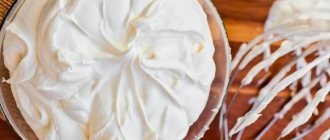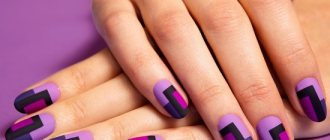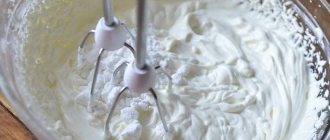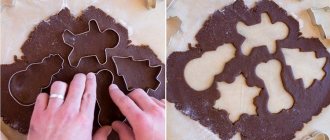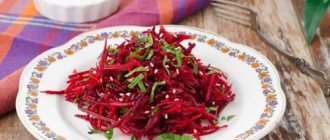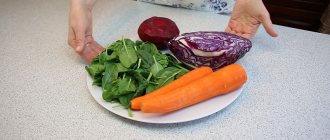A few words about the famous decor
Confectionery mastic is considered an excellent edible material for decorating all kinds of products: cupcakes, cakes, pies, pastries and even cookies. By decorating your baked goods with its help, you will be able to turn it into a real work of culinary art.
What mastic is made from: edible gelatin, condensed or powdered milk, chewing marshmallows, honey. However, sugar mass is rightfully considered the most popular. Most often it is used to create all kinds of figures, ornaments or cover the entire cake.
Of course, preparing sugar mastic requires certain skills and dexterity. In addition, it is very important to learn how to skillfully work with this capricious material. But in reality, you only need a few hours of free time and following some recommendations. Believe me, it's actually not difficult at all. Having mastered the cooking technology and recipe for sugar mastic, you can easily decorate literally any of your baked goods.
Description
Of course, ready-made material can be purchased at any specialized store. But if you want to make sugar mastic at home, it won’t be difficult. Moreover, the availability and low cost of homemade desserts have always been considered important arguments in their favor.
In terms of its consistency, sugar mastic is unusually elastic, easily takes the required shape and molds perfectly. That is why it is considered the best material for decorating desserts. This mastic is excellent for covering cakes and creating a variety of edible figures.
Peculiarities
A few simple tricks will help you skillfully prepare high-quality and surprisingly tasty sugar mastic.
- Usually the basis of this material is powder. It is advisable to purchase a store-bought product and sift it at least a couple of times before using it. After all, if even one sugar crystal gets into the mastic, the mixture will simply break apart when rolled out or will turn out completely inhomogeneous.
- After kneading, the material should be placed in the refrigerator for at least half an hour.
- When working with mastic, the table should be periodically sprinkled with powdered sugar or starch.
- The finished material can be stored in a closed container on the refrigerator shelf for two weeks. And you can leave it in the freezer for up to 2 months.
- If you want to make colored fondant, you can add liquid, dry or gel food coloring to it. The last option is the most affordable and easiest to use.
- Keep in mind that mastic sugar is extremely sensitive to moisture. It is commonly used to coat dry and buttery cakes. If the base is too wet or the cream drips from the surface, place the dessert in the refrigerator to harden. Please note that at the slightest contact with the liquid mass, the mastic may simply dissolve.
- It is best to build the figures in advance, about a week before making the dessert itself, so that they have time to dry well.
- Do not neglect adding citric acid to the mastic dough. This ingredient not only adds flavor to the product, but also prevents premature drying of the material.
Types of dyes
To create confectionery masterpieces, you can use different types of food coloring:
- synthetic and natural liquid;
- dry and granular;
- gel;
- kandurin (powder).
Additionally, they can be divided into fat-soluble (for butter creams, chocolate, both regular and modeling), alcohol- and water-soluble, depending on the medium in which they melt.
Synthetic liquid dyes are rarely used, mainly for coloring mastic and finished products with a brush. They are also used for airbrushing. The most common and easiest to use types are dry, gel and candurin.
Classic do-it-yourself sugar mastic
The material prepared according to this recipe turns out to be very tender and tasty. Working with such mastic is a real pleasure. Preparing sweet mass for decoration is actually not such a time-consuming task. Only one thing is important - to follow the chosen recipe exactly during the manufacturing process.
So, to prepare mastic you will need:
- 200 g milk powder;
- the same amount of powder;
- 3 teaspoons cognac;
- the same amount of lemon juice;
- 270 g condensed milk.
Be sure to stock up on plenty of powdered sugar - always keep it nearby while kneading. After all, it may well turn out that the prepared product is simply not enough for you.
LiveInternetLiveInternet
—Categories
- cooking (242)
- Crafts (79)
- Health (69)
- For kids (66)
- BEAUTY (63)
- Diets, cleansing, weight loss (62)
- Conspiracies (61)
- Prayer (39)
- Gymnastics for weight loss. (31)
- POEMS (24)
- AVON (17)
- home economics (16)
- sewing (10)
- Computer (7)
- Vegetable garden (7)
- Fortune Telling (3)
- Knitting (2)
- Photoshop (2)
We recommend reading: How to Cook Fish for Long-Term Storage in the Freezer?
-Music
—Search by diary
—Subscription by e-mail
— Regular readers
—Communities
-Statistics
How to make sugar mastic
First of all, sift the powdered sugar several times in a row. Then add dry milk to it and mix thoroughly. It is most convenient to mix the mastic right on the table. Carefully pour condensed milk into the dry mixture. Begin gently kneading the dough until smooth. Now add fresh lemon juice and process the mixture with your hands for 15 minutes. As a result, you should have a fairly elastic, soft mass with a viscous consistency. This mastic is very pleasant and easy to work with.
If you want to give your product some shade, you need to do it at this stage. Please note that a few drops of dye are enough. After adding, the dough must be kneaded by hand so that the color is evenly distributed. To begin with, it is best to tear off a small piece of mastic, add dye to it and knead it. This way you can evaluate the resulting color and decide whether more or less pigment is needed. By the way, in addition to store-bought dyes, you can use natural products, such as carrots, beets, citrus zest, blackberries or currants.
Wrap the prepared material in plastic and place in the refrigerator for 20-30 minutes. The cooled mass is much easier to roll out and glue. Properly made sugar mastic for cakes has a pleasant matte finish. At the same time, it remains very tasty and elastic.
Candurin dyes
Kandurin is a special pigment, thanks to which you can paint a product in gold, silver or mother-of-pearl color. It is not added to the mastic, but is applied on top of the finished figurine or cake coating. Sold both dry and liquid.
Kandurin has no analogues, and there are no serious shortcomings either. But the cake with it becomes more solemn and looks like a real jewel. It is indispensable for creating gold details and figures (for example, a shiny zipper on a bag cake or a ring).
How to paint mastic with kandurin
Let's see how to paint mastic with kandurin. You can decorate a cake with it in several ways:
- Dry. Using a brush, apply the powder to the figurine or mastic coating, then brush off with a clean lint or blow off any remaining residue.
- In liquid form. Dilute the dry mixture with vodka (1 to 2) or use ready-made liquid kandurin. Apply it with a brush, just like dry. You can spray it from the bristles of your brush to create a beautiful golden splash effect. Also try using it with an airbrush.
Course of action
First of all, pour the gelatin with boiled but already cooled water. Leave it to swell for an hour and a half. Then place the container with gelatin in a water bath and bring it until completely dissolved. Now add citric acid to the liquid and let the mixture cool.
Sift the powdered sugar several times, forming a mound of it. Make a small depression at the top and pour the gelatin mixture into it. Now all that remains is to knead the dough as quickly as possible - it should turn out snow-white and matte. It is very important to achieve homogeneity of the mass. At this stage, the preparation of mastic from gelatin and powdered sugar can be considered complete. As you can see, this recipe is even a little simpler.
If you want to paint the mastic, you need to do it now. Don't forget to knead the mixture vigorously with your hands.
To ensure that the mastic does not stick to the surface and is convenient to roll out, wrap it in polyethylene. Of course, it is advisable to cool it in advance. If you are making figures from your mastic, use water to glue the parts together. To do this, carefully moisten the bonding areas with literally a drop of liquid.
Chewing marshmallow mastic
This method of making sugar decoration is considered one of the most popular today. This is due to the fact that marshmallow mastic - that’s what chewing marshmallows are called - is very easy to prepare, unpretentious and lends itself well to modeling. Working with such dough is a real pleasure - it effortlessly takes the desired shape, does not stick to the skin, is evenly colored and rolls out easily. It is best to create a variety of figures and small design details from such material. Although mastic made from powdered sugar and marshmallows is also suitable for covering the cake.
To prepare this material, prepare in advance:
- 2 tablespoons of water;
- 200 g marshmallows;
- 300 g of powder.
As you can see, the set of products is minimal. And the cooking process is not particularly complicated.
Progress
First of all, you need to melt the marshmallows. To do this, transfer the lozenges into a deep container, add water to them and microwave for 5 minutes. If you wish, you can melt the soufflé in a water bath, but it will take a little longer.
In order to make the mastic dough as elastic as possible, while melting the marshmallows, you can add a small piece of butter to it. And instead of water, you can add freshly squeezed lemon juice to the mixture, which will relieve the decor from being too cloying.
After the marshmallows reach the desired consistency and have increased in volume, begin adding sifted powdered sugar to it in small portions. Mix all ingredients thoroughly until smooth and homogeneous. As a result, you will get a fairly dense, thick mass.
Keep in mind that this mastic should not be too tight. Add powdered sugar until the mixture stops sticking to the skin. Then form the prepared dough into a ball, roll it in powder again and wrap it in plastic. Place the prepared preparation in the refrigerator for half an hour. After the required time, the mastic will become denser and less sticky. Now you can form decorative elements from it.
Try not to overuse powdered sugar. It is better to put it less than required and then add it. After all, it is almost impossible to correct too tight mastic.
Basic Tips
Many people do not know how to make mastic at home. But DIY mastic decorations for beginners and experienced cooks are a real salvation if you need to decorate a cake quickly and beautifully.
The main ingredient for mastic is powdered sugar. It needs to be crushed into a fine powder, otherwise the sugar crystals will not dissolve well, and when rolling out the mastic will simply tear into pieces. If you can’t grind the sugar yourself, you can purchase store-bought powder and sift it through a fine sieve before cooking.
In order to make cake mastic with your own hands and get an impeccable result, you should follow a few simple rules:
Avoid excessive humidity. To avoid the layers showing through, the products to which it will be applied should not be heavily soaked in syrups and cognac. The ideal option would be dry biscuits or cakes with a thin layer of buttercream.- When rolling, you should take into account the fact that the product should not turn out thin. Ideally, the thickness is 2-3 mm. Otherwise, all the errors and unevenness of the cake base will be visible.
- The finished product can be stored in plastic bags in the refrigerator. It is necessary to ensure that the container is sealed to protect the paste from air and excess moisture. It is better to take a bag made of thick polyethylene, otherwise when rolling out the mastic in a bag made of thin polyethylene, it will slip and form folds.
- To make the decoration shine on the cake, you need to cover it with a solution of honey and vodka. To do this, take any type of honey and vodka in a 1:1 ratio, mix thoroughly and apply over the product with a soft brush with silicone bristles. After an hour, the vodka will evaporate, and the cake will shine and attract more and more attention.
- If the mastic has frozen, then it must be placed in a microwave oven or in a water bath for a couple of minutes.
